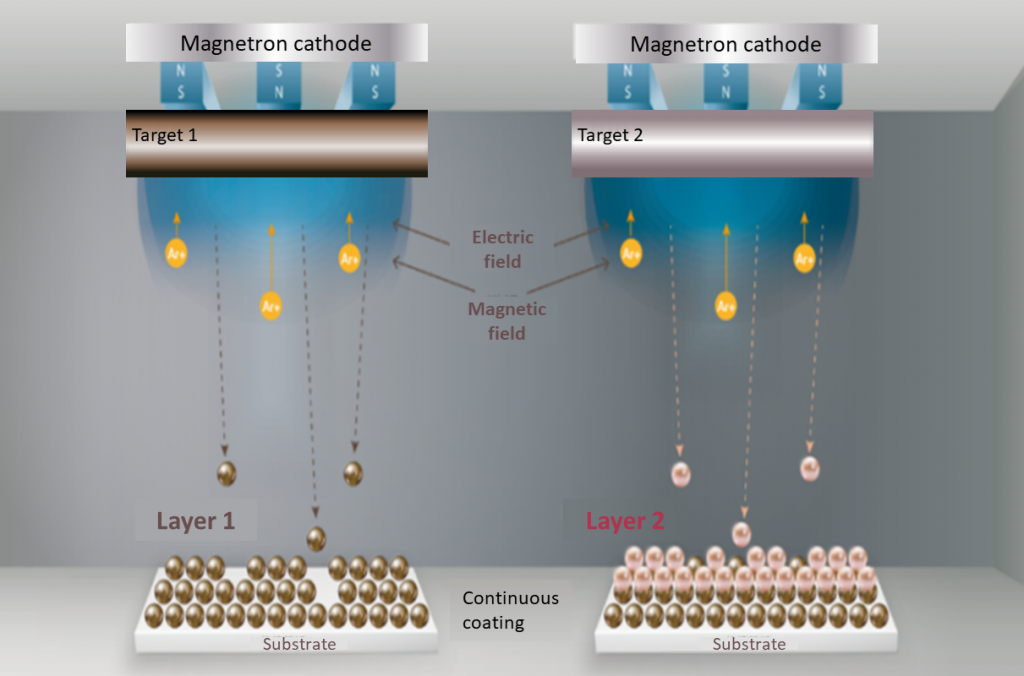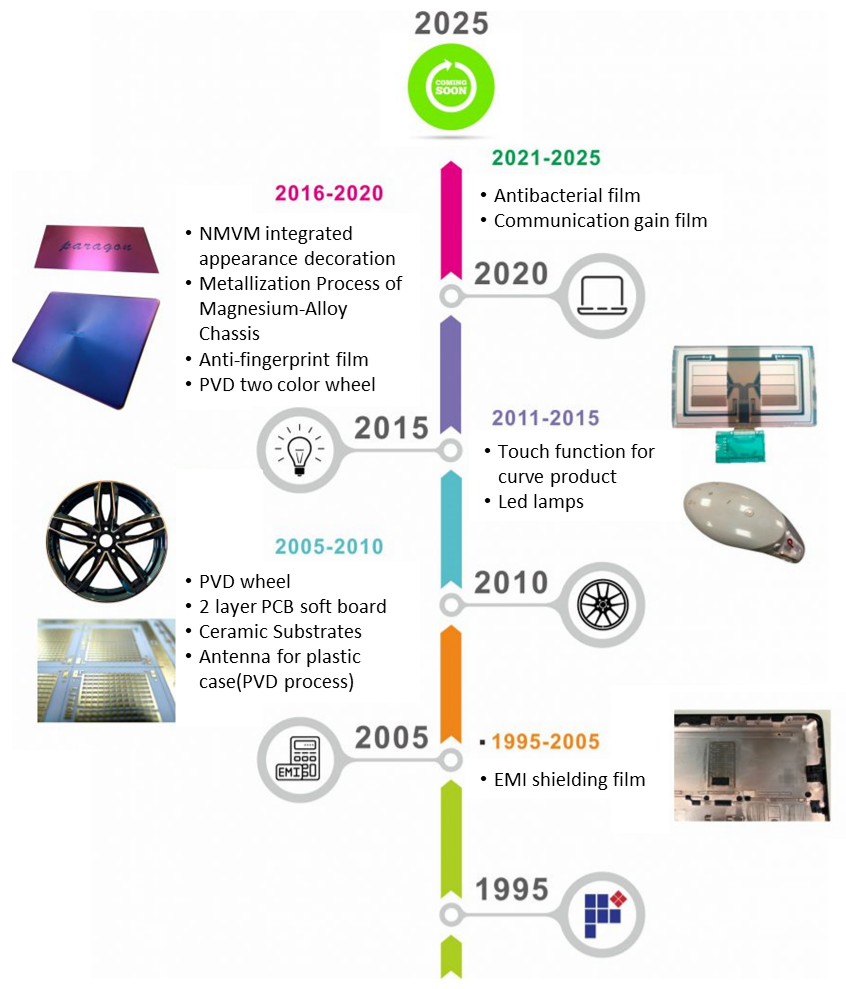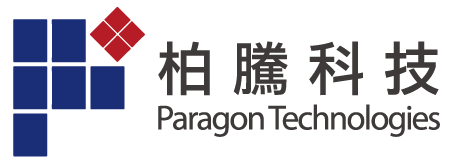Sputtering Principle
Paragon utilizes a continuous inline sputtering process, where a stable vacuum environment is established. High voltage is applied to generate plasma from dissociated inert gas. The ionized inert gas ions then bombard the target surface under the influence of the magnetic field, causing the surface atoms of the target material to be sputtered and deposited onto the substrate, forming a uniform and continuous thin film.

Technological Advancement and Innovative Integration
We invest in multidisciplinary research and development, committed to developing high-quality/high-end products to enhance the added value for our customers. Furthermore, we are dedicated to long-term research and development, continuously exploring and studying the vacuum sputtering technology. We actively introduce professionals from various fields to expand the application of vacuum sputtering through interdisciplinary research.
Laboratory Precision Testing Instruments
| Product Name | Brand/Model | Function | Testing Capability |
|---|---|---|---|
| Ultraviolet-Visible-Near Infrared Spectrophotometer | SHIMADZU Solidspec-3700 | Measurement of optical film reflectance/transmittance/color | Spectral measurement range: 240-2600 nm |
| Contact Thickness Measurement Gauge | KOSAKA ET4100 | Surface profiling through probe scanning or calculating sputtered film thickness using scan height differences. | Detectable film thickness: >10 nm |
| Metallographic Microscope | LEICA DM2700 M – RL/TL (Top and bottom illumination) | Observation of surface defects in sputtered film layers; Metallographic analysis. | Observation magnifications: 5X, 50X, 100X, 500X, 1000X |
| Imaging Contact Angle Measurement Instrument | FTA 1000 B by Fantec | Measurement of contact angle of water droplets on the surface of the test specimen, calculation of contact angle/surface tension/surface free energy. | Contact Angle Measurement Range: 0-180 (reading accuracy ≤ 0.1) Surface Tension Measurement Range: 0-2000 mN/m (accuracy ± 0.5%) |
| Standard Light Box | PREMO PBS-60 | Used for inspecting the color of work surface films using standard light sources. | Configured Light Sources: D65 6500°K F/A 2700°K CWF 4200°K TL84 4000°K UV |
